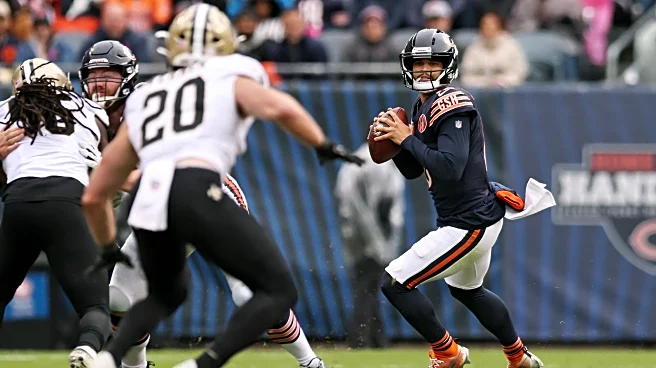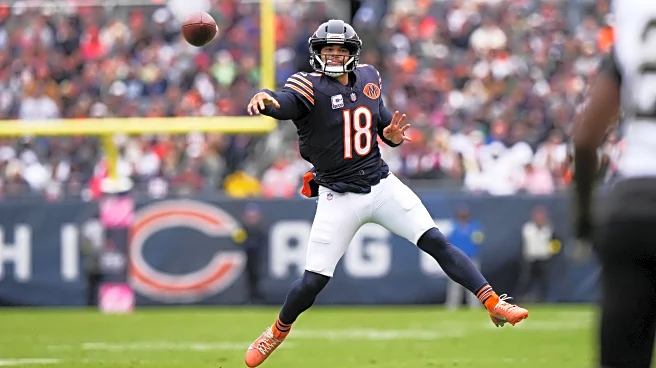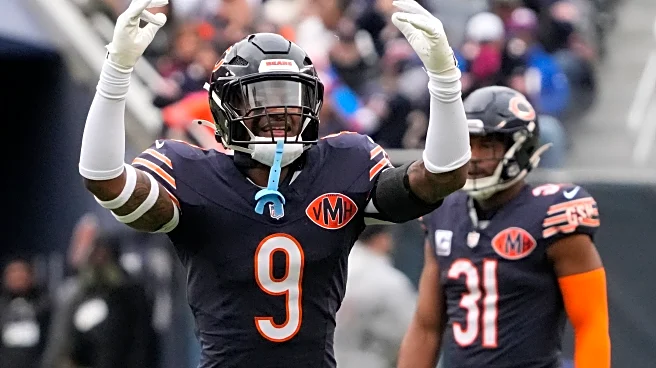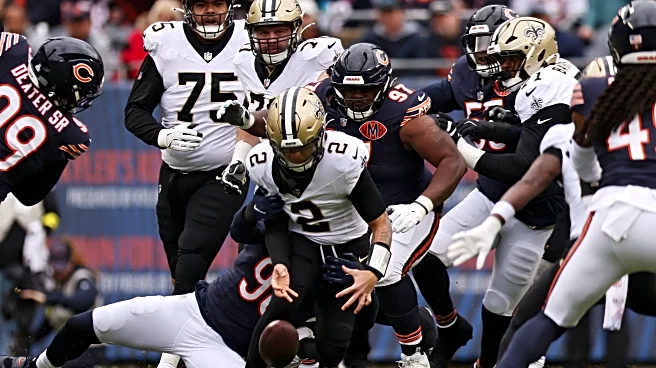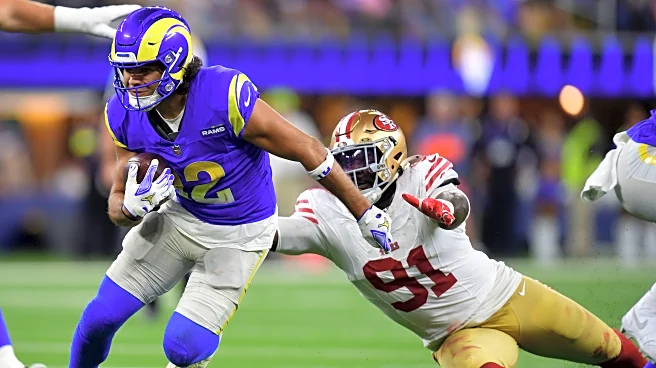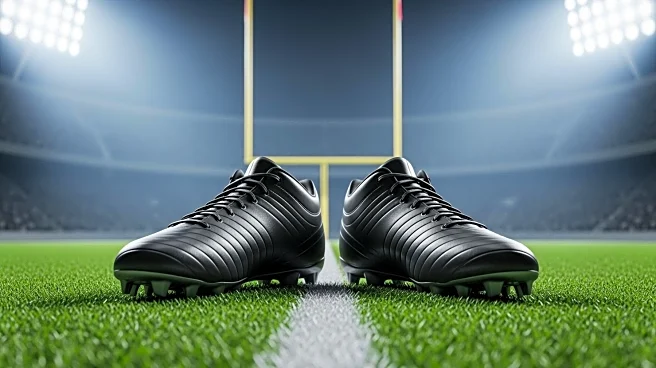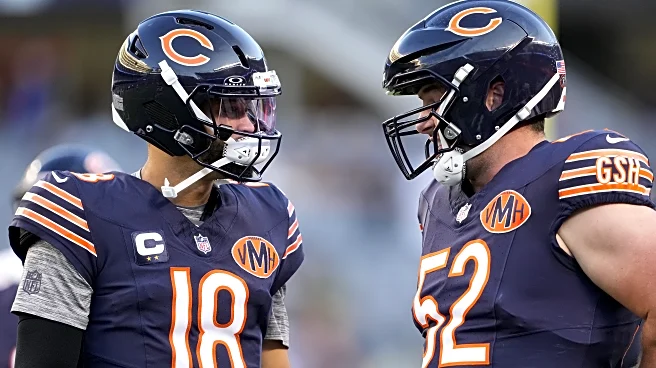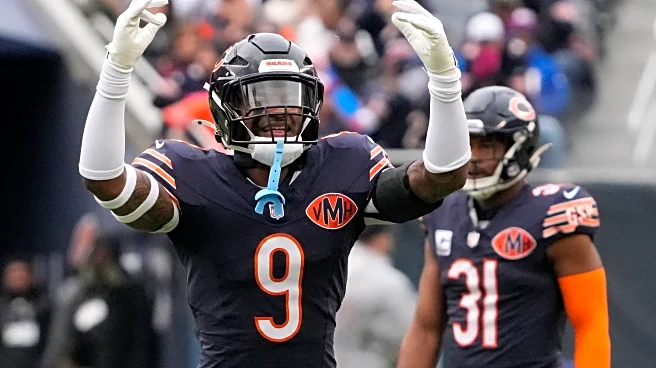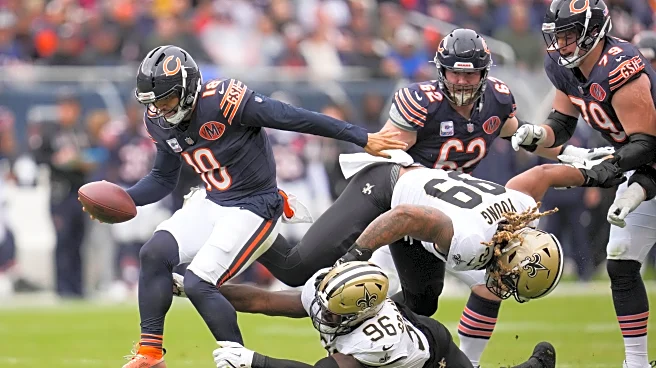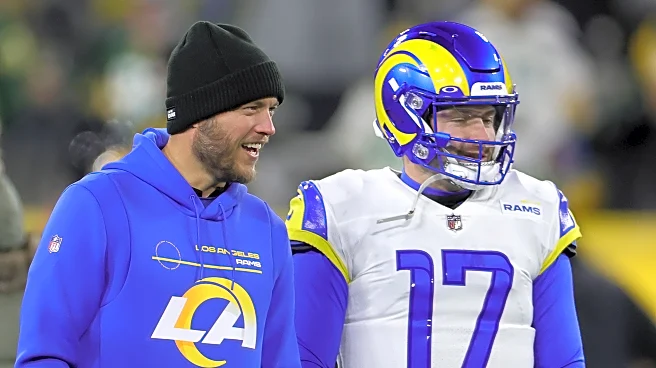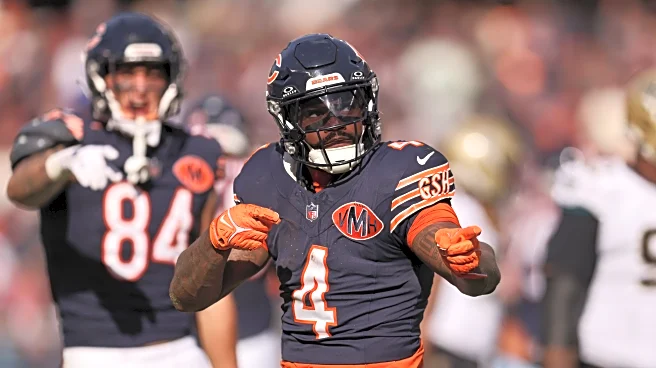Your Chicago Bears are on a four-game win streak for the first time since 2018, when Matt Nagy’s team pulled it off twice on their way to a 12-4 record and an NFC North title. This time, the Bears took
care of business against the New Orleans Saints on Sunday afternoon, delivering a fairly convincing 26-14 win. Chicago racked up more than 200 rushing yards, forced four turnovers from Saints quarterback Spencer Rattler, and sacked him four times.
While the passing attack has cooled off over the last two weeks, the defense, ground game, and special teams have stepped up to fill the gap. It’s understandable to feel some concern that the passing game, led by second-year quarterback Caleb Williams, hasn’t looked quite as sharp since that Week 3 dismantling of the Cowboys. But progress is rarely linear. There are going to be hiccups. And while it’s not ideal that Williams has looked off recently, there’s still every reason to believe the experience he’s gaining, while learning a new offense and footwork base, will pay off and lead to the next jump forward.
After all, it wasn’t smooth sailing early on for Jared Goff and Ben Johnson, either. Their first six games together produced a 62.3 percent completion rate, an 11-to-6 touchdown-to-interception ratio, 12 sacks, and a 1-5 record. Then everything clicked. The Lions offense took off, and Goff hasn’t looked back since. For a deeper dive into that evolution, check out the excellent breakdown from Kirsten Tanis.
Despite the offense still struggling to fire on on cylinders, it leads the NFL in big plays through 7 weeks of play. Suggesting that when things get to where they need to be, this offense is going to take off.
So what did we learn this week? Let’s take a look at the usual benchmarks, notes, and play breakdowns.
Benchmarks
(Season Averages in Italics)
C/A: 19.6/31.8 (61.6%) | 15/26 (57.7%)
Yards: 235.8 | 172
aDOT: 8.5 | 9.2
Touchdowns: 1.8 | 0
Turnovers: 0.4 | 1
QB at Fault Sacks: 1 | 1
Passer Rating: 98.0| 61.7
True Passer Rating: 132.2| 110.6
Time to Throw: 2.93s | 3.36s
Time to Pressure: 2.61s | 2.70s
Pressure Rate: 30.31% | 35.71%
On-Target Rate: 64.4% | 59.3%
Poor Play Rate / Big Play Rate: 12.3% PPR / 7.1% BPR | 15.6% PPR / 3.1% BRP
Game Notes

The full grading sheet for each play can be found here.
- NFL Passer Rating / True Passer Rating / PFF Grade: 61.7 / 110.6 / 62.4
- On-Target Throws: Season Average: 64.4% | Week 7 vs. Saints: 59.3%
- This represents nearly a 10 percent dip in his On-Target rate from last week, with two of his completions even landing in the “off-target” range — the 15-yard completion to D’Andre Swift on the offensive pass interference call, and the 9-yard pass to Colston Loveland on 3rd down in the red zone.
- It’s worth noting he had only 27 gradable plays this week, compared to the usual 38 to 40 we see from the average quarterback grade. That lower volume can influence the grading due to the smaller sample of evaluable reps.
- Still, it was evident this was one of his less accurate performances of the season, though, interestingly, it was also less erratic than last week. In other words, while his precision slipped, his misses were more controlled and less scattershot overall.
- This represents nearly a 10 percent dip in his On-Target rate from last week, with two of his completions even landing in the “off-target” range — the 15-yard completion to D’Andre Swift on the offensive pass interference call, and the 9-yard pass to Colston Loveland on 3rd down in the red zone.
- 15.6% Poor Play Rate (turnover-worthy + poorly graded plays) against a 3.1% Big Play Rate (great + elite graded plays)
- We saw a noticeable spike in his Poor Play Rate this week, which isn’t surprising given the turnover. Most turnover-worthy plays are graded not just for the result, but for how the turnover occurred. For example, was it a flat-out miss caused by inaccuracy, or was it a contested throw where the defensive back simply made the better play? That context matters. There were also a couple of potential big plays left on the table, either due to inaccuracy or strong defensive efforts.
- Now, a note on the emerging run game. Heading into the Commanders matchup, a game against what was, at the time, one of the league’s better run-stopping units, the Bears ranked 27th in rushing yards per game. Two weeks later, after back-to-back dominant performances on the ground totaling 367 rushing yards, they’ve climbed all the way to 7th. As is often the case with a new offensive line group, cohesion takes time, and we’re finally seeing the payoff.
- The tandem of D’Andre Swift and Kyle Monangai became the first Bears duo to each average at least six yards per carry on 10 or more attempts in the same game since Jordan Howard and Tarik Cohen accomplished the feat in 2017 (per Brendan Sugrue).
- The defense is playing at an exceptional level after a rocky start to the season. Since surrendering 52 points in that blowout loss to the Lions, the Bears have allowed just 19 points per game and forced 15 turnovers over that span. That surge has propelled them to the top of the league in takeaways through seven weeks, a remarkable turnaround for a unit that looked lost early on.
- The resurgence of both the defense and the ground game has helped stabilize the offense in recent weeks. After averaging 232 passing yards and two touchdowns per game through the first four weeks, the Bears’ air attack has cooled off since the bye, managing just 212 yards per game and one total passing touchdown over the past two contests.
- It’s important to note, though, that the Saints came into this matchup with a clear plan to stop the pass. As former Bears center Olin Kreutz pointed out, New Orleans spent much of the afternoon in nickel formations, prioritizing coverage and rarely stacking the box to defend the run, at least until Chicago began leaning on the ground game to close things out late. The film supported this claim.
- Caleb Williams’ time to throw came in at 3.36 seconds this week, an elevated mark largely influenced by seven drop backs that each stretched beyond five seconds. Excluding those extended plays, his average time to throw was a much quicker 2.08 seconds, potentially a sign of increased decisiveness, whether that meant checking down, tucking and running, or simply throwing the ball away, it seemed like on those 7 plays it was difficult for him to decide on what to do.
- There were a few moments where he appeared to have space to scramble for meaningful yardage but instead opted to extend the play or look for a throw. It’s a noticeable contrast from last season, when he was often quicker to pull the ball down and run. The encouraging part is that this shift suggests growth, he’s keeping his eyes downfield, staying patient, and trusting his arm to make a play rather than defaulting to his legs at the first sign of pressure. He just needs to start making those throws again, something we did see him do at a good clip last season.
- Caleb was 6-for-7 for 76 yards and a 111.9 Passer Rating throwing on play action, and his highest On-Target rate happens to be on balls out of play action (78.0%).
- However under pressure he was just 2-for-9 for 40 yards and a 45.6 Passer Rating.
Play Reviews
The plays we’ll be reviewing are presented in the order they occurred in the game.
Analysis: We start with the interception. It’s 3rd and 17, and Ben Johnson dials up Mills at the top of the screen with DJ Moore running a deep dig at the bottom. Caleb shows excellent anticipation here, beginning his throwing motion as Rome reaches the Bears’ 45-yard line. Rome breaks at the 50, angling toward the sideline.
In my opinion, the read is correct. The Saints are sitting in a Cover 3 shell, and the throw is headed for the soft spot between the underneath defender and the deep third at the top. Unfortunately, Caleb leaves the ball behind Rome. In this situation, he needs to lead him toward the sideline. The combination of poor placement and the throw’s depth gives the defender enough time to break on it and come away with the interception. With proper placement, this should’ve been a first down.
Not that this play should’ve happened in the first place, since the offensive pass interference was called two snaps earlier, but I digress.
Analysis: I picked this play to showcase Caleb’s ability to deliver an on-time, accurate ball despite pressure bearing down on him. This looks like a half-field read where Caleb decides pre-snap which side to work based on the defensive look. The Bears run a Sail concept at the top of the screen, with D’Andre Swift motioned out to clear space for DJ Moore. Pressure arrives quickly, but Caleb fires an accurate throw with strong anticipation to beat it, and DJ does what he does best: picking up YAC and breaking tackles along the way.
It’s simple concepts like this that Caleb needs to execute consistently.
Analysis:This play highlights a missed opportunity. Caleb has Rome open on the shallow dig for an easy completion but works off him in favor of progressing elsewhere. The pass rush quickly compresses the pocket, forcing Caleb to escape. He does well to avoid the sack and extend the play, rolling to his left as Rome mirrors his movement and presents a clear target. However, Caleb sails the throw, leaving it well out of reach. The throw gives Rome no chance on what should have been a simple first-down completion.
Analysis: On to the very next play, which carries some familiar traits: Caleb escaping pressure, and Rome working back to his quarterback. The play design is similar to one I highlighted last week when Caleb connected with Luther Burden deep. Here, two receivers (one of which I neglected to diagram) run crossing routes over the middle, while Colston Loveland runs a drag-and-sit underneath. I believe Loveland is the first read on this progression, but pressure collapses the pocket and forces Caleb to extend.
Rome completes his deep cross, recognizes the scramble situation, and works back to his quarterback. Caleb delivers an accurate ball into the deep level of the field that hits Rome in the hands, but he fails to secure it. It’s a contested catch, but one you expect a top-10 receiver to make, especially given Rome’s strong contested-catch performance in 2025. In my grading system, drops are scored as catches for play quality, so this goes down as a Great play.
Analysis: Speaking of Luther Burden, how about a nicely delivered ball to him out of play action? With DJ Moore running the clear out down the middle of the field, he opens up the deep middle for Luther Burden. This is a really good play design because the pre-snap motion allows Luther Burden to fire off the line of scrimmage forcing his man in coverage to flip his hips and worry about Burden going deep, which allows a massive amount of separation when Burden cuts into his Dig route, making this a very simple completion for a chunk play.
Things like these are a staple of the Ben Johnson offense, and they look so easy when it’s put together like this.
Analysis: The last throw we will look at is a flood concept designed to give Caleb a high-to-low read. Both primary options come open, but he hesitates to pull the trigger, and pressure forces him to roll right. Caleb does a good job extending the play, and Burden responds well by ad-libbing for his quarterback. After resetting his base, Caleb fires deep to Burden, who has worked back and created separation. However, the throw comes up short, landing about two yards in front of him and eliminating any chance for a completion. This had the potential to be a significant gain given Burden’s ability after the catch, but it ultimately goes down as a missed opportunity.
Summary
His final scores of 1st Half (-1.15) / 2nd Half (-0.75) / Game (-1.90) land him with an lower half “Average” game grade.
The Bears move on to take on the Baltimore Ravens on the road, a team that is last in scoring defense and 28th in passing yards allowed. I’m personally hoping for a get right game from Caleb Williams, taking advantage of a secondary that is giving the Cowboys a close run for their money for worst secondary in the league. Until next week, and as always, Bear down!
Gary Baugher Jr. is a rookie contributor to WCG, bringing football insight backed by over 16 years of experience in organized football and more than 30 years as a passionate fan of the game. You can follow him on Twitter at @iamcogs.
